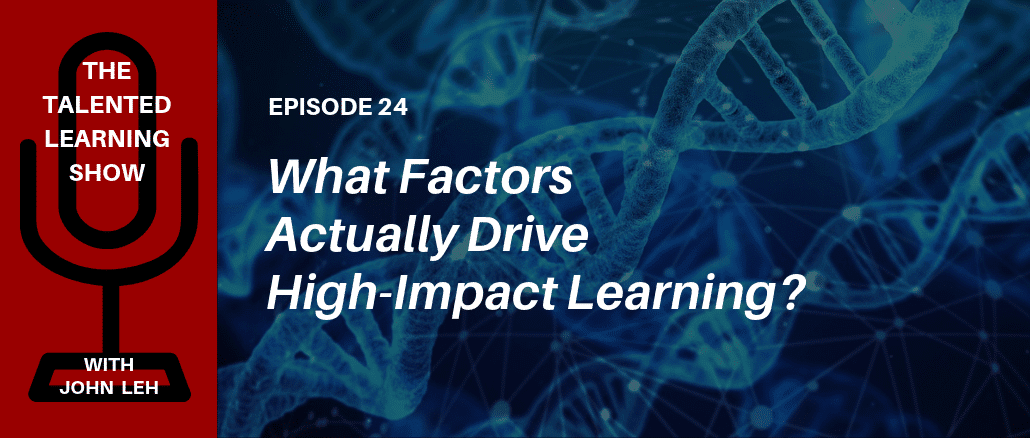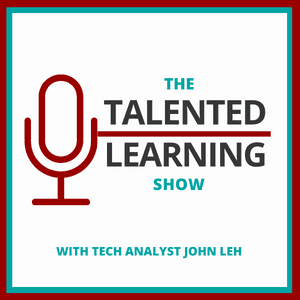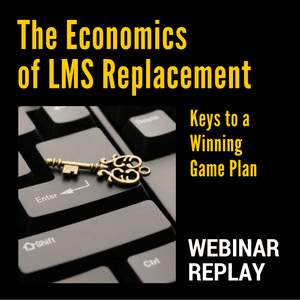
Podcast: Play in new window | Download
Subscribe: Apple Podcasts | Spotify | Amazon Music | Android | iHeartRadio | Blubrry | Email | RSS
EPISODE 24 – TOPIC SUMMARY AND GUEST:
Have you given up on finding a formula for adult learning success? It wouldn’t surprise me. For years, learning strategists and software innovators have been chasing this holy grail.
But recently, Paul Morton of CrossKnowledge piqued my curiosity when he told me about promising new insights. Our conversation left me wondering how these new findings are actually shaping workforce skills development. I bet you’ll be interested, too.
KEY TAKEAWAYS:
- In today’s business world, measurable results matter. Increasingly, that includes skills development – yet many organizations still struggle to deliver high-impact learning.
- Rigorous new adult learning research offers a fresh perspective on what works, what doesn’t and why.
- These recommended practices may not be easy to implement, but they are leading to successful outcomes.
Q&A HIGHLIGHTS:
“High-impact learning” is a popular term in our profession, but I’m not sure people know it until they see it. Your organization has a very specific definition. What is that?
Well, most of the learning-related stuff people do in organizations is not high-impact learning. Right?
You get an email message that says, “Thou shalt perform this compliance training immediately or be punished.” So you’ve got to do it.
Very motivating…
Right. If you don’t do it, you get in trouble. “Do this, or you lose your employment.” As extrinsic motivation goes, that’s fairly high.
Yep!
But adults are actually motivated by intrinsic motivation. We want to drive our own development.
So I think we find high-impact learning in the difference between two wonderful terms: pedagogy and andragogy. (Or literally, “guiding children” versus “guiding men.”)
Children need teachers to guide or lead them because they have no intrinsic experience. They are subject-oriented. They think, “Today we’re going to learn reading or science…”
Right.
But adults are oriented by the need to solve a problem. They think, “I need to know how or why this works.”
That means, if you design adult learning the same way you teach children, it’s not high-impact learning. You won’t get meaningful, lasting skills improvement or effective business results.
Agreed.
We’ve analyzed about 20 years of research and found that organizations haven’t been doing this right. Instead, this research is pointing us in a better direction.
So we have an opportunity to help the next generation of adults learn much more effectively. We have isolated the building blocks needed to build learning programs in a way that actually sticks.
We call this the HILL Model (short for High-Impact Learning that Lasts). The model, itself, is brand new. But the component parts are a lot older.
What are the core building blocks of this high-impact learning model?
To create effective adult learning experiences, you want to apply seven principles. Specifically:
- Create a sense of urgency
- Provide opportunities to share and collaborate
- Balance the mix of online and offline activities
- Give learners more choice and control over their activities
- Encourage coaching and mentoring for deeper engagement
- Add flexibility and casual interactivity throughout the process
Makes sense…
Assessment is also critical. But we’re not talking about a test you take at the end of an online course. Effective assessment offers frequent feedback throughout the learning process. It helps you monitor what you’re doing. It drives you to learn more. And it avoids the need for a test at the end.
Does this model emphasize methodology over technology?
Technology helps leverage all the aspects of this model. That’s why we’ve built a platform (called BlendedX) that integrates online and offline learning activities.
But the HILL model stands alone as a proven adult learning methodology. When you combine these elements – including ongoing assessment – it really hits the impact levers.
Exactly what does a high-impact learning scenario look like?
Well, it should be more like a learning experience than a course. It integrates multiple components. And it’s relatively straightforward to build.
Mind you, it’s not necessarily easy to build, because nothing good is easy. But it is relatively straightforward to build.
What led CrossKnowledge in this direction?
Remember 20-odd years ago, when people went crazy for distance learning? It was a magic wand that promised to reach everybody at a ridiculously low cost, with wonderfully high impact.
Well, 20 years later we’re still saying the same thing. We continue to think, “If we give people access to more and more learning stuff, things will change.”
Well, I don’t know what your garage looks like, John, but I’ve reached “peak” stuff!
No doubt.
We don’t need more “stuff.” If I need the answer to a question, I’ll Google it.
So access to content isn’t the problem. It’s disengagement. It’s relevance. These are the challenges that people have with learning. People need a meaningful reason to learn. Connect with that and you’ll find high-impact learning.
How are successful organizations engaging learners?
We don’t work in organizations. We work in companies. We literally work in the company of other people. That’s where the word “company” comes from.
You cannot shape, change and redirect a company without shaping and changing and redirecting the individuals within it. And when individuals are constantly improving themselves, they will, in turn, improve their company and its impact on the world.
I understand that you’re developing a universal skills framework. How does that map to the high-impact learning model?
According to a CEO survey by Gartner, 80% of employees don’t have the right skills to perform today’s jobs, much less the jobs of tomorrow. We want to help individuals and their employers address that genuine need.
People want to know how to do their job better. It’s as simple as that. They want to acquire skills, not have access to “stuff.”
So you’re developing high-impact learning experiences focused on critical work skills?
Yes, we’re building-out a universal skills framework using the HILL methodology, so organizations can help their people acquire essential business skills that are important today and will remain important in the future.
It’s leadership and mentoring. It’s communication and interpersonal skills. It’s adaptability and flexibility. It’s empathy. It’s ethics. It’s critical thinking.
These are the core human skills that can make a real difference, every day.
Tell me more about the underlying research behind the high-impact learning model…
Two brilliant researchers, Filip Dochy and Mien Segers, conducted a thorough, pragmatic meta-analysis of adult learning theory. The scope was massive, spanning scientific research from the last 20-some years.
They concluded that many accepted adult learning practices actually don’t work very well. And they developed strong arguments for moving away from lecture-based learning methodology to something that’s more active, more hybrid and more deeply based on learning science…





